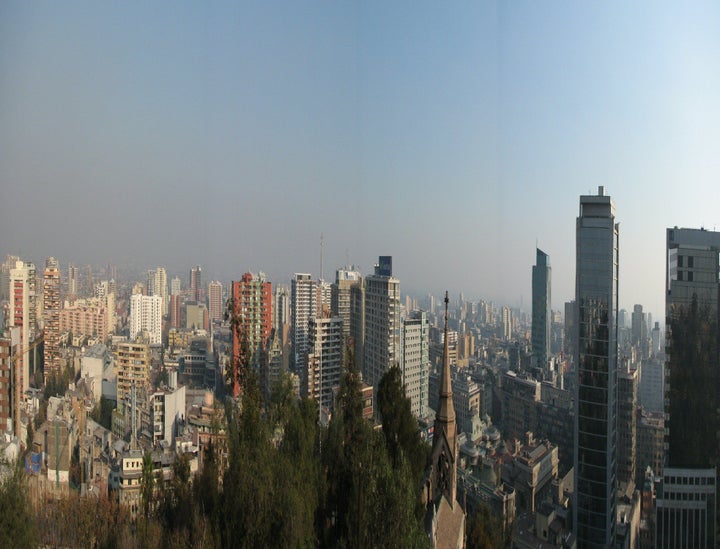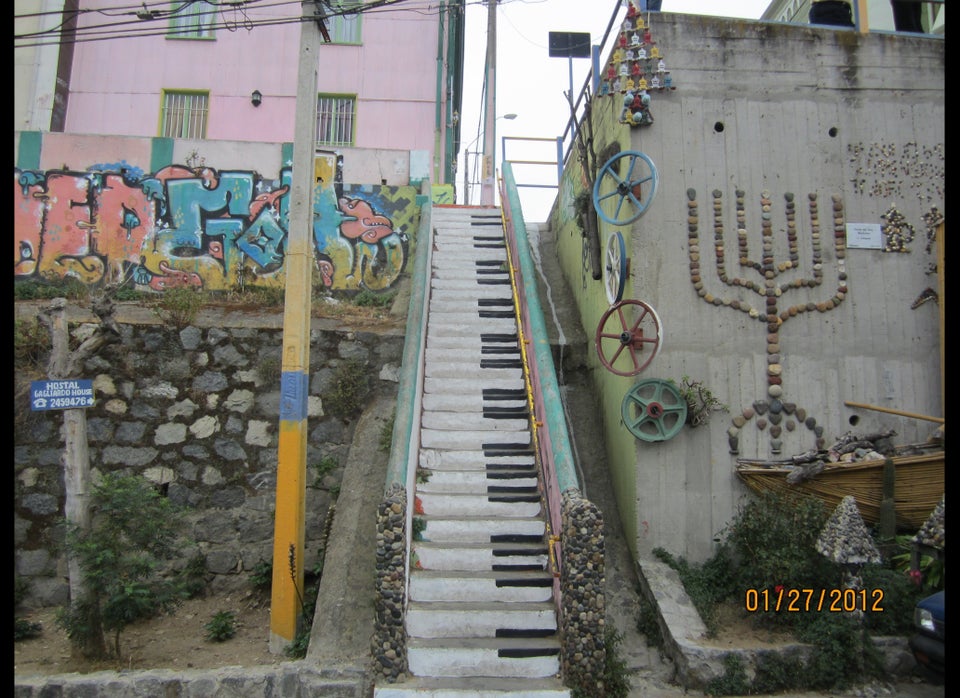
This city rises steeply from the ocean to the foothills. It undulates. Indeed, some streets are so steep, pedestrians need stairways to walk downhill. Thus, Valparaiso's streets are strewn with stairways.
"Look at that one!" said our guide. Instead of steps, though, I saw a trompe l'oeil of a piano keyboard. The black keys and the white keys spray-painted on the stairway. Each step was a sharp or a flat.
This clever juxtaposition of the real and the whimsical abounds in Valparaiso, where graffiti is an honored art form. I'm from New York, where once upon a time in the slovenly 1970s graffiti was the default layer of smudge that seemed to encompass almost every aspect of urban life -- from the subway cars (inside and out) to the sides of inhabited buildings, to sidewalks, to buses. Some saw it as romanticized revolution: Norman Mailer even wrote a paean to these so-called graffiti artists, likening their scrawls to an urban cri de coeur.
But in Valparaiso, graffiti is a healthy part -- you might even say an esthetic part -- of the city life. According to Jacobo Ahumada, "Valpo's" cultural development director, the city promotes graffiti "so long as they are of creative nature."
Starting with the dictatorial, oppressive regime of Augusto Pinochet in the 1970s, graffiti became a regular form of protest. It was anonymous and furtive. But even after Chile became more democratic, graffiti in various forms and esthetics, thrived. Finally, City Hall decided to do something about it -- it made it acceptable, under supervision.
"The artists have freedom to express their ideas or points of view, which can be social criticism, or any personal creation, as long as they are a contribution to the urban area," Mr. Ahumada says. There is now a competition, with the winner getting the paraphernalia necessary to paint over bricks and concrete.
Thus, my fascination when I learned this aspect of the city from our guide, an expert provided by the London-based Brown+Hudson bespoke travel advisers (brown+hudson.com). Most visitors to Chile, who come by cruise ship, disembark here but then quickly head to other tourist destinations, such as the penguins of Patagonia, or the stone statues of Easter Island, via Santiago, the capital. But if they skip Valparaiso and its streets, they will miss a unique serendipitous art experience.
We spent one morning looking over the crevasses and fences, doorways and street stairways, with this surprising array of artwork. One of the more dramatic was an almost photographic representation of key figures in Chilean culture, including Gabriela Mistral, the pseudonym of the first Latin American woman to win the Nobel Prize for literature; Salvador Allende, the socialist who won the presidency in 1970 but was ousted three years later in a military coup, and Pablo Neruda, Chile's most noted poet and a Nobelist as well.
Look around and find a character from Avatar, and op-art and pop-art and classical forms. It is everywhere and so interesting that I must admit that when I was driving through the high-end, pristine neighborhoods of Valpo, I was disappointed there was no graffiti.
